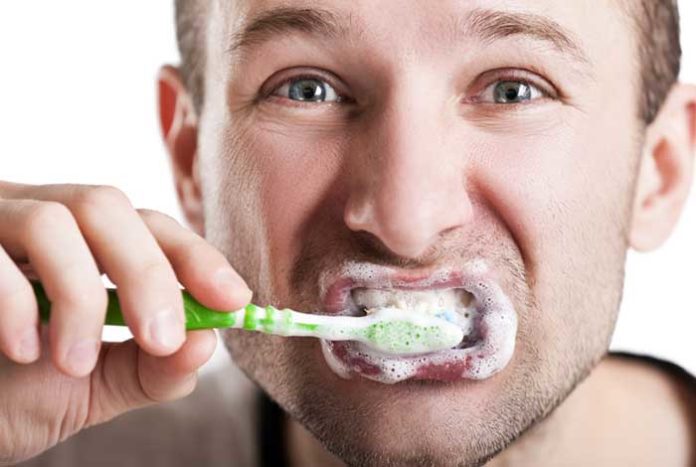
Triclosan is a harmful antibacterial agent, found in toothpastes, soaps, wipes, clothes, etc. It is mostly used in toothpastes and accumulates in toothbrush bristles, according to scientists. This means that your exposure to triclosan can continue even when you change your toothpaste to a non-triclosan one.
Triclosan is now banned in the Unites States in soaps, wipes and gels. However, it is still allowed in toothpaste as it has anti-inflammatory quality, which helps in reducing gum inflammation, cavities and plaque, said lead researcher, Baoshan Xing, professor of environmental chemistry, University of Massachusetts.
Previous researches indicated that triclosan can interrupt hormones in humans and animals. Researchers also claim that it may lead to antibiotic resistance and can harm the marine life.
In the research, Xing’s team simulated brushing the tooth with 22 toothbrushes using a range of toothpastes. The study reported that the accumulation of triclosan on these brushes is 7 to 12 doses of the amount used per brushing.
According to the study, toothbrushes with “tongue cleaners” and “polishing cups” are generally made out of elastomers – a viscoelastic polymer – that absorb the maximum amount of triclosan. During the stay, when the researchers switched to a different toothpaste with no triclosan while keeping the same brushes, the toothbrushes continually released the chemical for 2 weeks.
The American Chemical Society said that in addition to extended exposure of triclosan, this chemical gets into the environment when used brushes are thrown away.
The U.S. Food and Drug Administration (FDA) banned the use of triclosan in antiseptic washes as it could be risky and also because there is no strong evidence to prove that it is more effective in killing germs than soap and water. However, triclosan still finds application in cookware and clothing as for these, no FDA approval is required.




